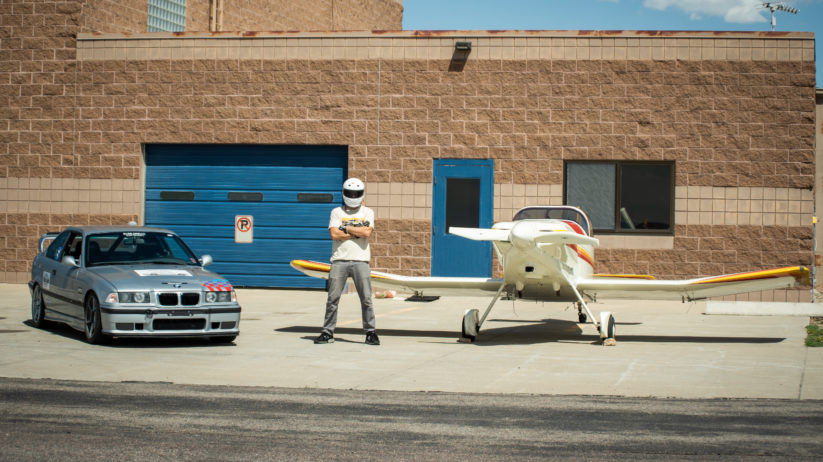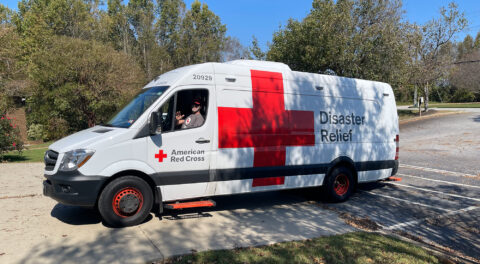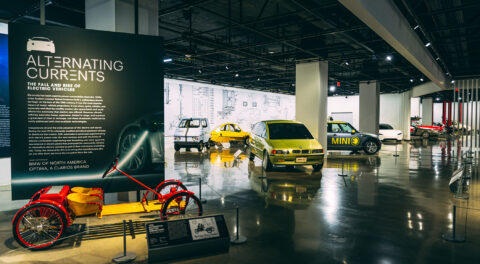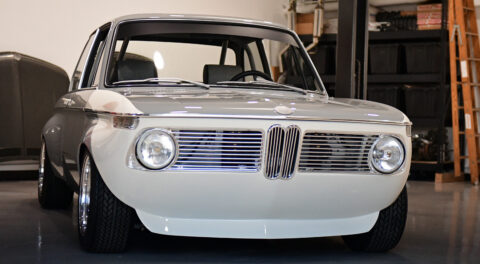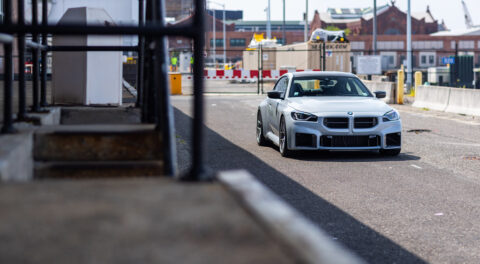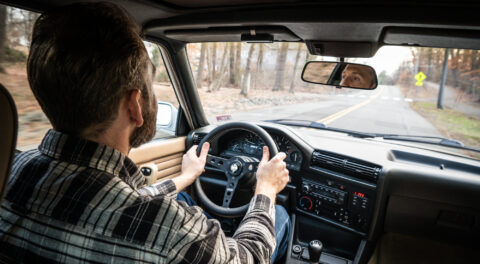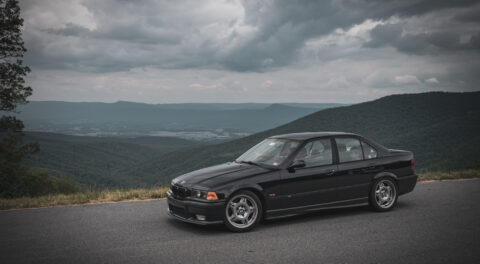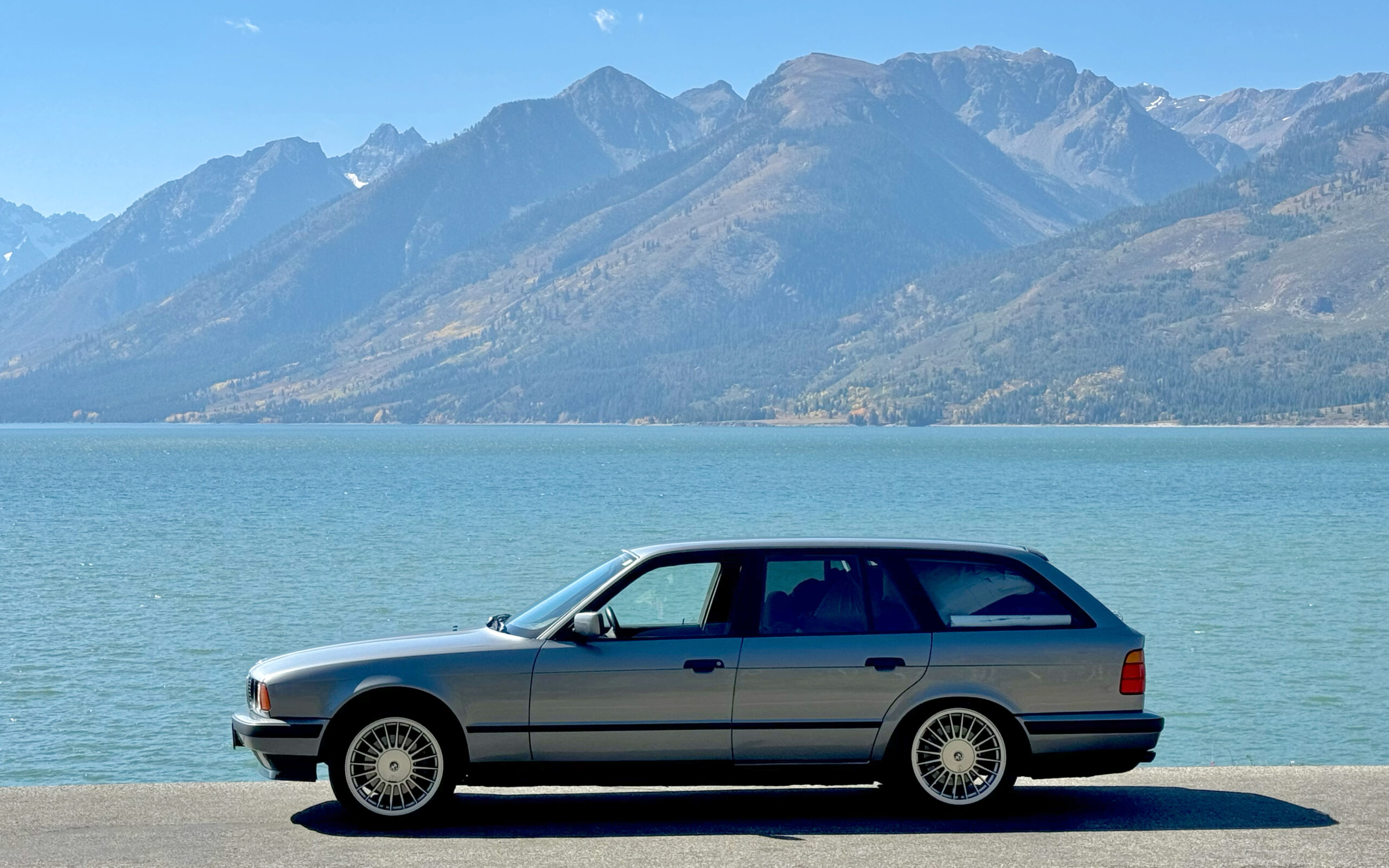There are certain benefits to living on an airport, namely the convenience of opening an entire wall of your house and being able to taxi directly to a runway. I don’t own an airplane, but if you have a hangar you don’t need to—airplanes will find their way to you. One such airplane is a small experimental called a Thorpe T-18 whose owner is gracious enough to let me fly it. Designed in the 1960s by John Thorpe, the T-18 is a delightful little airplane with an impressive power to weight ratio giving it a 160 mph cruise speed while burning only eight gallons per hour. Little is the key word, though, as it has a wingspan of only twenty feet and measures eighteen feet in length—just a few inches longer than the G12 7 Series.
The Rocky Mountain Chapter’s first autocross was on May 5 at Front Range Airport, and with that, an opportunity presented itself.


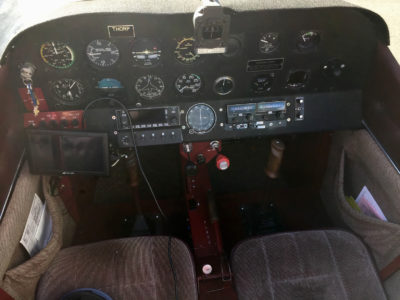
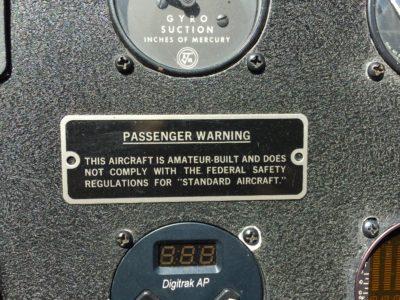
In the M Coupe I rarely perform better than the middle of the pack of BMW A Street, but I really enjoy spending the day with the Rocky Mountain Chapter autocross regulars. Plus, it would be a good opportunity to brush up on my driving for the upcoming BMW CCA time trials. This year I had a new tool at my disposal: the “village bicycle” E36 M3 that my side business acquired last year. It’s called the village bicycle because it has been passed around within the Rocky Mountain Chapter more than a few times, but each person who has owned it has only made it better. Highlights of the build are mild power upgrades, MCS dual adjustable coilovers, Stoptech Brakes, and a genuine M3 Lightweight rear spoiler. More importantly the E36 M3 has none of the temperamental manners the M Coupe tends to exhibit near the limit.

The “village bicycle” BMW E36 M3.
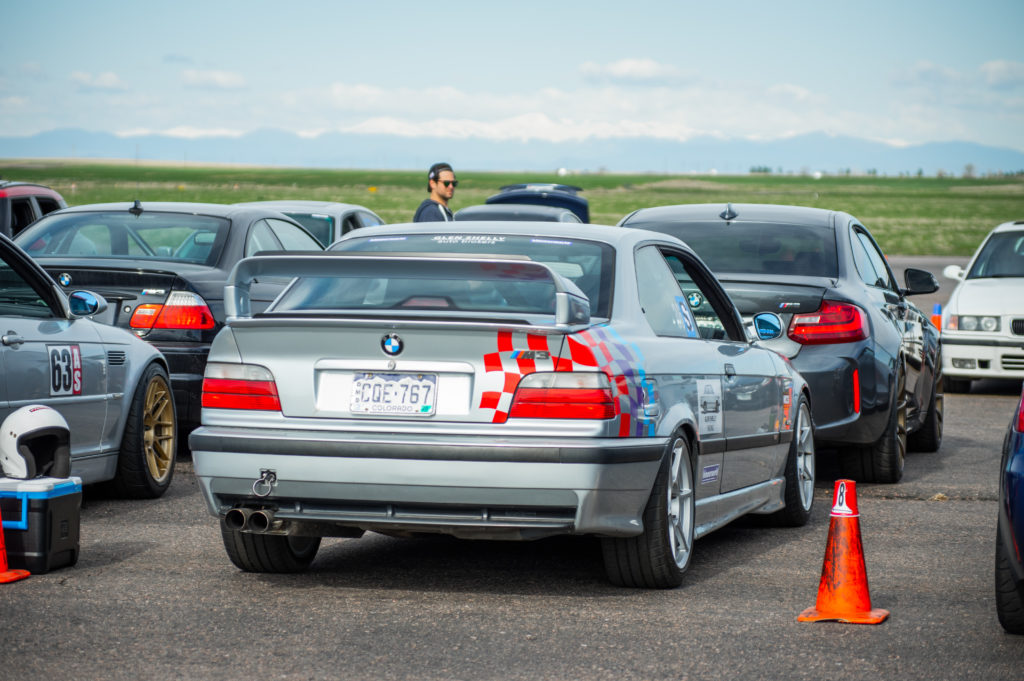
There is always a time, convenience, and cost factor in the flying verses driving equation, which rarely favors flying. However, living on an airport, and attending an autocross being held on an airport, made this a unique door-to-door opportunity. There was one small logistical problem of course—how to get the car there. I solved that by enlisting the help of photographer Peter Thompson. We met at 7:00 am, along with my friend Christine Foley, who wanted to go for a fly, and a race ensued. Even though he was driving, Thompson actually had a reasonably straight shot to the autocross via the E-470 toll road. There was one small obstacle in my way though, and this was the Denver International Airport (KDEN)—an airport so large that it has its own zip code. I would have to circumnavigate Denver’s upside-down-wedding-cake-shaped Class B (Bravo) airspace via the fifteen-mile ring—a significant detour that actually made it a reasonably close race.
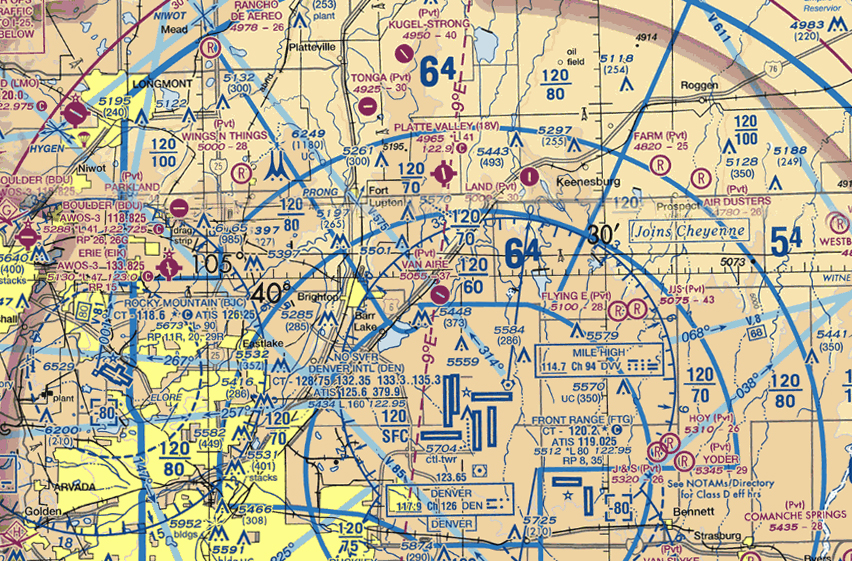
Denver’s Class B airspace.
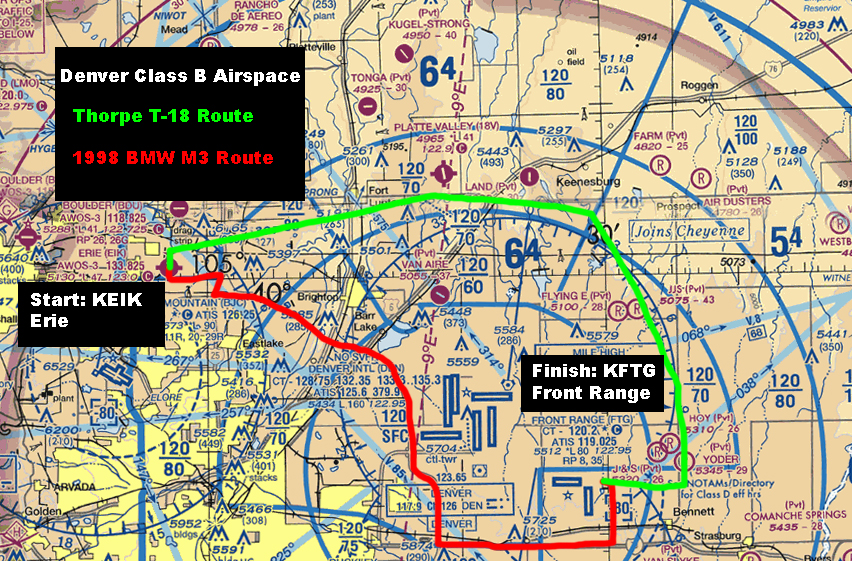
The race routes, car and airplane.
We counted down from three and were off!
Foley and I headed straight to the fuel pumps, another time delaying factor that would level the playing field between car and airplane. With the tank half-full, the Thorpe easily had enough fuel to make it to Front Range Airport and back, but the forecast was calling for the possibility of gusty winds during the flight home. Topping off with some extra gas to loiter in the air for favorable landing winds back at Erie Airport (KEIK) would add peace of mind. After all, the three most useless things to a pilot are the runway behind him, the altitude above him, and the fuel that is not in his gas tanks!
After a thorough preflight and with a full gas tank, Foley and I departed thirty minutes later than Thompson. Weighing only 1,600 pounds, and with a roll rate of 180 degrees per second, the Thorpe requires a gentle touch. I smoothly added power and simultaneous right rudder, and then gently danced on the rudder pedals to maintain runway centerline. At 50 mph, I gently pushed the stick forward to raise the tail wheel, then held that pitch attitude until it was ready to fly—one must not rush such matters. Once it felt light on the main wheels, I eased the stick back and we were airborne. Clearing the traffic pattern, Foley and I turned east towards Front Range Airport (KFTG).
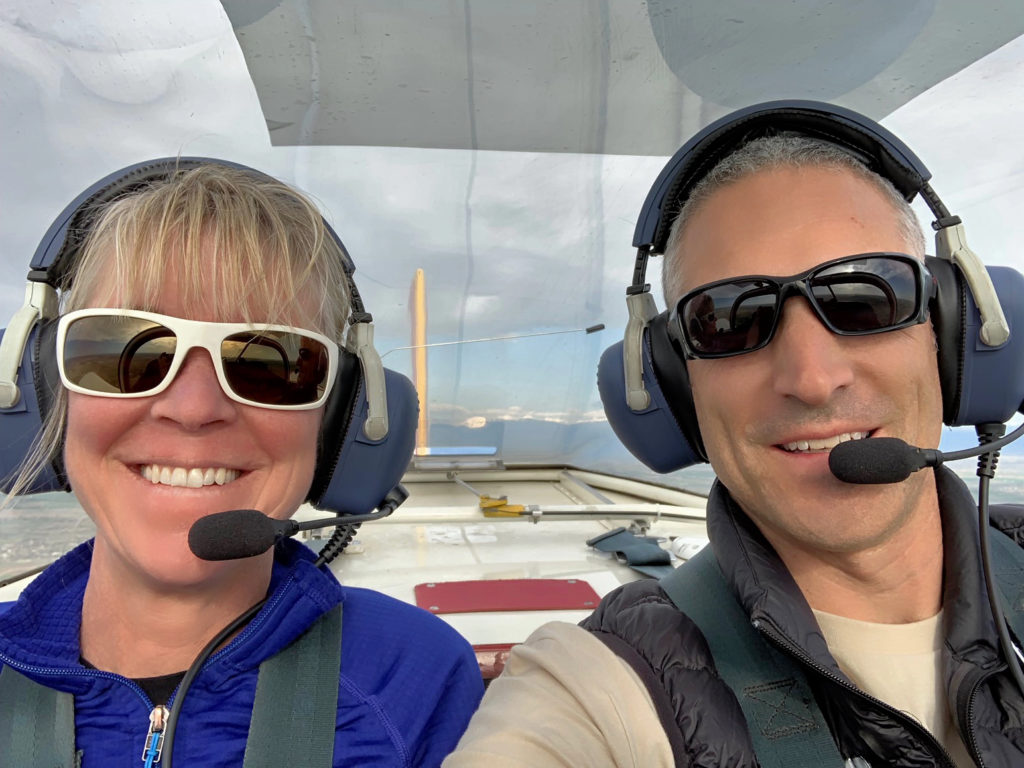
Christine Foley and I level at 6,500 feet headed east to KFTG.

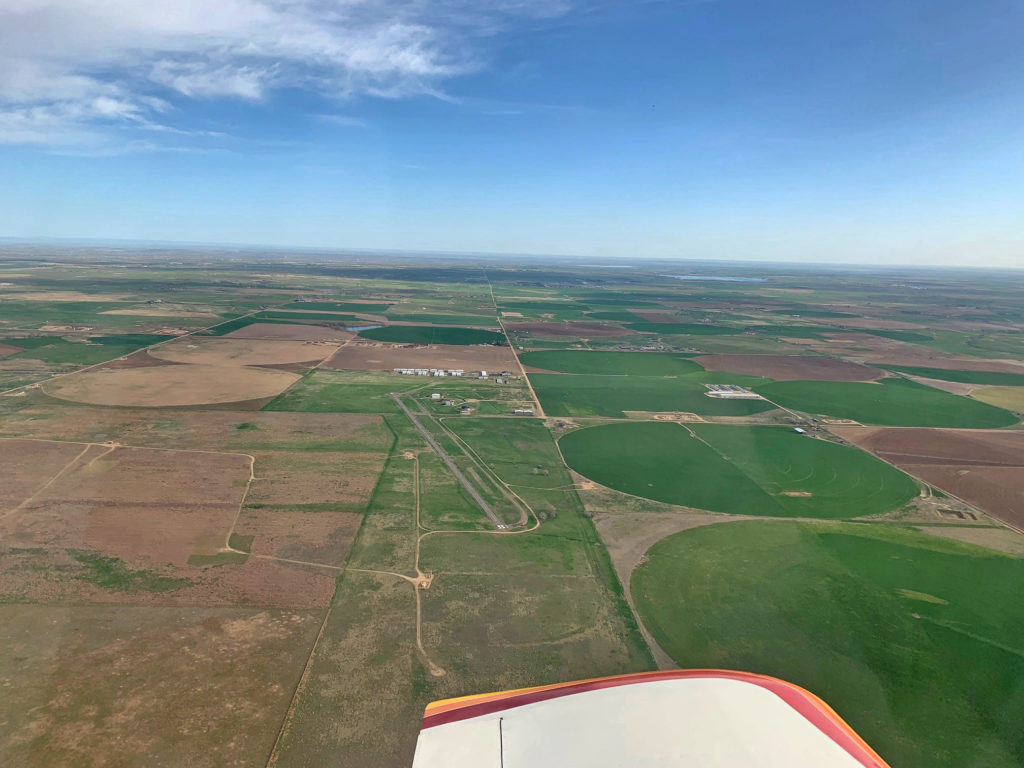
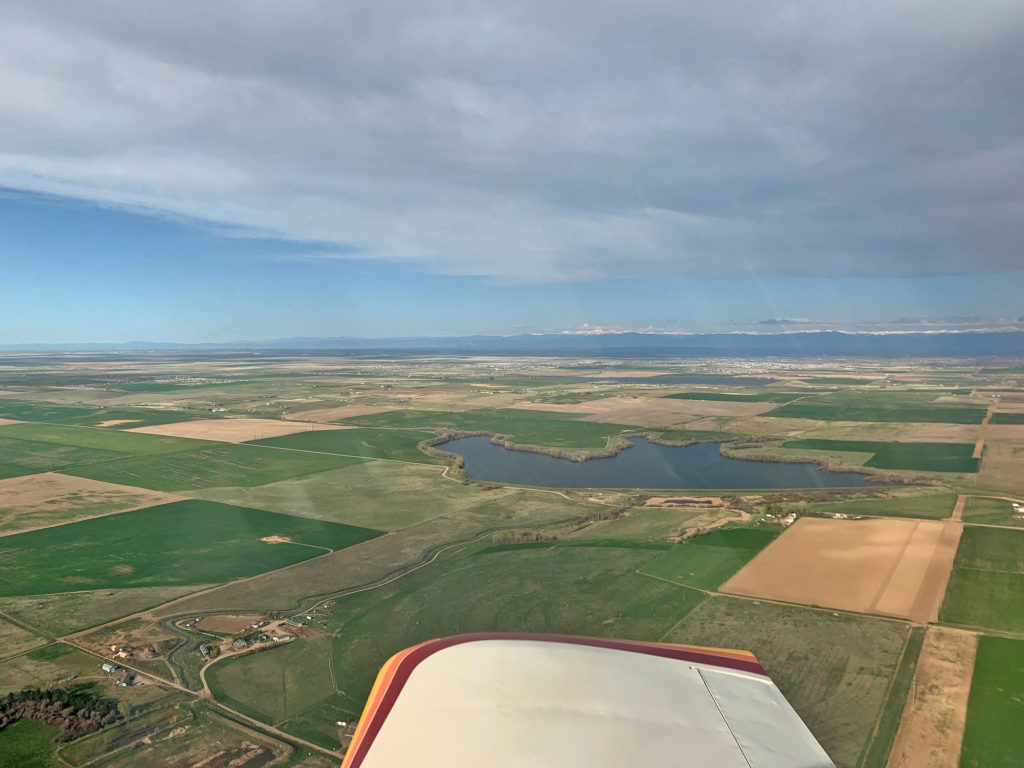
Turning south at Prospect Reservoir with the snow-capped Rocky Mountains as a backdrop.
Leveling off at 6,500 feet (500 feet below the Class B airspace) I checked in with Denver Approach and requested direct KFTG through the Class B. They replied to my request with a curt “Unable” as KDEN was landing south, but asks like this can be worth a shot. As Foley and I made our way north and then east following highway 52, the world below us was just beginning its Sunday morning. Horses were trotting out to pasture—as were lions, tigers, and bears—as we passed over the 10,000-acre Wild Animal Sanctuary. At Prospect Reservoir, I hooked south and then east once Denver Approach handed me off to Front Range tower. I requested a short approach and landing on runway 17, which had a twelve-knot crosswind, but was also the closest runway to the autocross ramp. I swooped in, rounded out, and eased the upwind main wheel on pavement with a healthy dose of right aileron and left rudder to hold runway centerline. Next was the downwind main wheel, followed by a dash of forward pitch to “make ‘em stick” until airspeed bled off enough to lower the tailwheel. I’d be lying if I said it wasn’t challenging, but that is part of the fun!
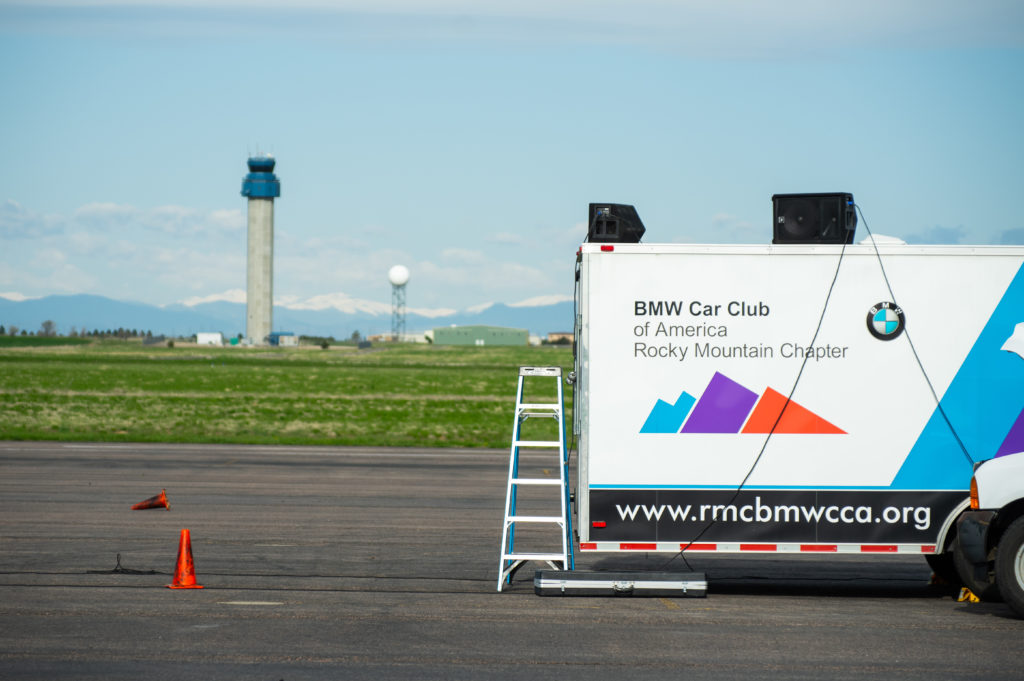
The Rocky Mountain Chapter Autocross at Front Range Airport.
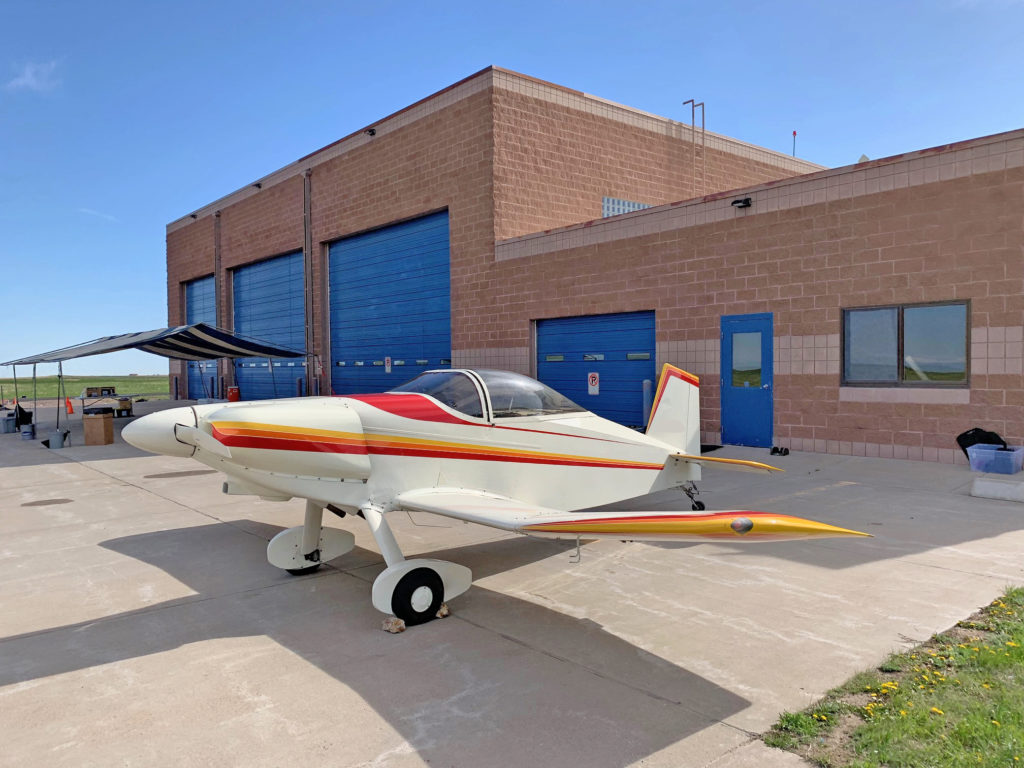
The Thorpe Beat the E36 M3, but not by much!
Once clear of the runway, the tower advised me to use caution taxiing on the east ramp as there was some kind of car thing happening there, to which I responded, “Roger, we are aware of that sir.” Foley and I made quite an entrance taxing onto the south end of the autocross course. There was no sign of Thompson yet in the E36 M3, but he rolled up just a few minutes after us. We had won the race, but he would have beaten us if not for a wrong turn on the back entrance to the airport ramp.

The E36 M3 in the paddock for tech inspection.

A quick trip around the course on a longboard.
There was no time for celebration, as the real race was about to begin. Course designer Michael Feldpusch had put together a long and fast course that was slightly less technical than his usual perplexing cone mazes. I took a lap on my skateboard before the driver’s meeting and quietly thanked him for having mercy on us for the first autocross of the season. There were two very long slaloms linked by turns and transitions of varying degrees. It seemed like a course that could favor power cars due to the long slaloms, but not overtly. The E36 M3’s modifications put it in the Super Street Class, where it should be competitive if not for worn and heat heat-cycled tires that had no business on an autocross course.
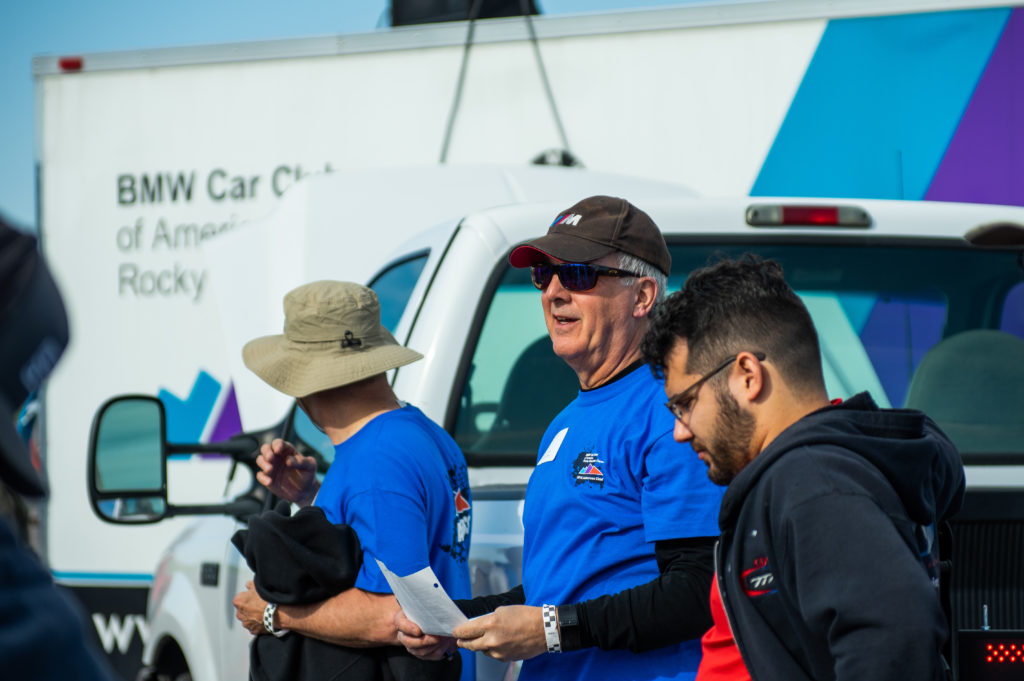
Rocky Mountain Autocross Chair Keith Dana conducting the driver’s meeting.
For the morning practice runs my times consistently hovered in the 55-second range, and it quickly became apparent that car placement was more important than outright speed—perhaps it wasn’t a power course. For the timed afternoon runs, I hunted the sub-55-second mark, but the lack of good tires really let the car down. It was a shame because everything else about the E36 M3 was absolutely fantastic. Turn-in was crisp, mid corner was neutral, and the slip angle was telepathically controllable. The E36 M3 had none of the bad manners that the M Coupe’s trailing arm rear suspension can when it is pushed near its limits. Even so, without better rubber, my times were not going to change—at least until something suspiciously coincidental happened on my last run.
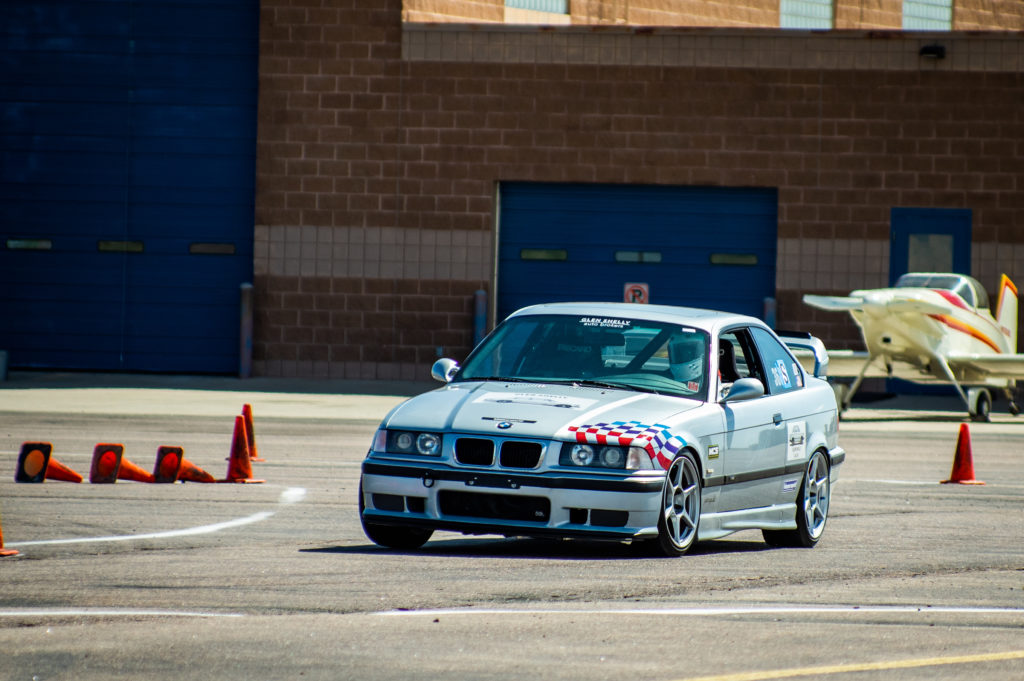
Chasing a sub-55-second lap time in the E36 M3.

The autocross is held on a ramp area that airplanes occasionally have to taxi through to get to a hangar complex. If an airplane enters the ramp, the course is red flagged. As I was exiting a set of sweepers onto the back slalom, I was red flagged due to a Cessna taxiing onto the course. I pulled off and was allowed a re-run. With proper heat in the tires, the M3 showed more of what it was capable of. I jumped a full 1.2 seconds to a 54.08, good for third in SS class, which was also mid-pack—the more things change, the more they stay the same! I laughed quietly in my helmet at the likely conspiracy theories: The only guy who flew to autocross gets the only re-run of the day because of an airplane on the course. Hmmm.Conspiracy or not, I’ll take all the help I can get!
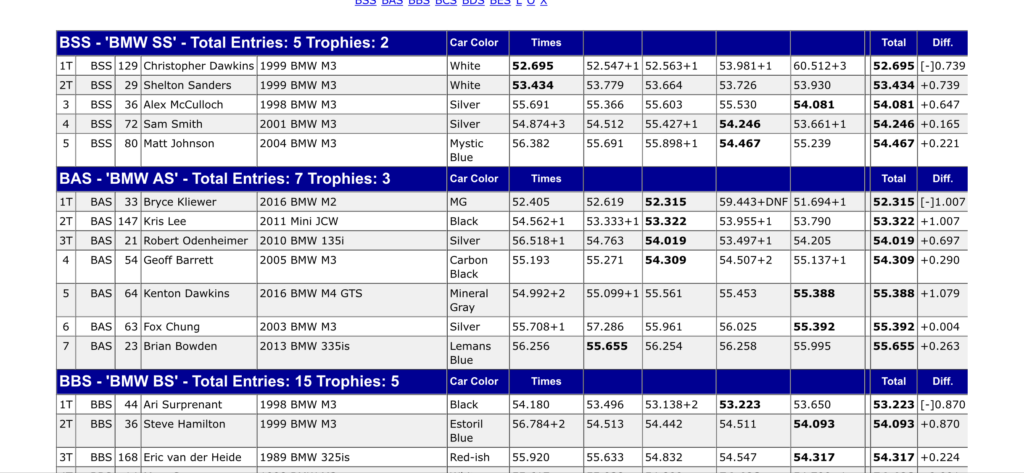
My best time was a 54.081, good for third place in BMW Super Street.

Chief of Scoring Mark “Smark” Smith reading the times to Alain van der Heide’s amusement at the awards ceremony.
Foley and I took off after the awards ceremony and subsequently lost the race with Thompson back to KEIK thanks to a small thunderstorm that was passing over the airport—I was glad for the extra gas I had opted to take on in the morning. We stayed clear until the storm passed, giving me the opportunity to demonstrate some poorly executed aerobatics. Properly nauseated, we finished the day with smiles on our faces.

The race home would be won by the E36 M3 thanks to a small thunderstorm at KEIK.

The obligatory Stig shot!
I’ll have good tires for the next autocross and with that, no more excuses. I’ll also have to make friends with that Cessna guy for a strategically planned re-run!—Alex McCulloch.
[Photos courtesy Peter Thompson.]

